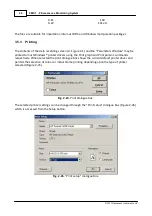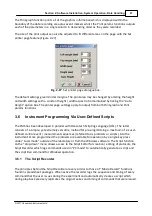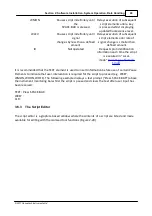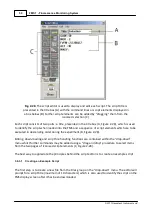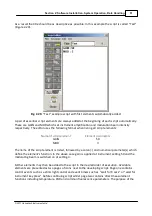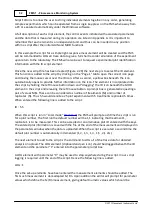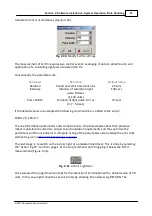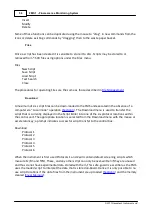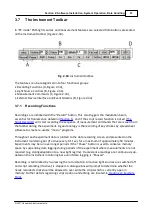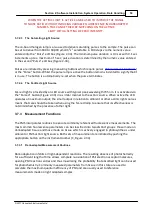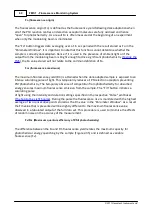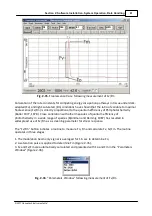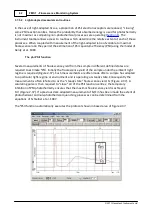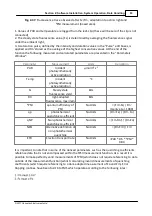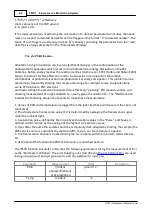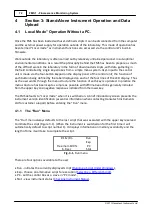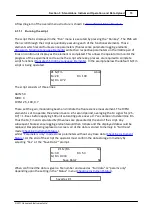
59
Section 2: Software Installation, System Operation, Data Handling
© 2017 Hansatech Instruments Ltd
WHEN THE ACTINIC LIGHT IS ACTIVE CAN BE USED TO IMPROVE THE SIGNAL
TO NOISE RATIO WITHOUT INDUCING VARIABLE FLUORESCENCE IN DARKADAPTED
SAMPLES. THIS CAN BE TRIED BY SWITCHING ON THE ACTINIC
LIGHT WITH A SETTING OF ZERO INTENSITY.
3.7.2.3
The Saturating Light Source
The on-board halogen lamp is also used to deliver saturating pulses to the sample. The pulse can
be set to deliver from 180 to 18,000 µmolm
-2
s
-1
selectable in 100 steps via the numeric value
entered into the “Pulse” edit box (Figure 2-34). The minimum pulse duration is 0.3 sec with 0.1 sec
increments up to a maximum of 5 sec; pulse duration is determined by the numeric value entered
in the second “Pulse” edit box (Figure 2-34).
Pulses are initiated by pressing measuring buttons which require pulses (
.)
or the “Pulse” button. Whilst the pulse lamp is active the button remains indented to signify that it
is in use. The button is automatically re-set when the pulse terminates.
3.7.2.4
The Far-Red Light Source
Far-red light is provided by an LED source with typical peak wavelength 735 nm. It is activated via
the “Far-red” button (Figure 2-34) in a similar manner to the actinic source. When active the LED
operates at maximum output; the small output in relation to ambient or other actinic light sources
means that care should be taken when using the far-red lamp to ensure that its effectiveness is
not diminished by the presence of other light.
3.7.3
Measurement Functions
The FMS incorporates routines to execute commonly referenced fluorescence measurements. The
most common fluorescence parameters can be classified into two distinct groups: those made on
dark-adapted tissue and those made on tissue which is actively engaged in photosynthesis under
ambient or FMS actinic light source. Both sets of measurement are initiated by pushing the
appropriate button on the instrument toolbar (C, Figure 2-34).
3.7.3.1
Dark-adapted Measurement Routines
Dark-adaptation inhibits all light-dependent reactions. The resulting absence of photochemistry
for a sufficient length of time allows complete re-oxidation of PSII electron acceptor molecules,
opening PSII reaction centres and thus maximising the probability that absorbed light can be used
for photochemistry. Commonly measured parameters from tissue in this state are used to
calculate the maximum quantum efficiency of PSII and are usually used to reference
measurements made on light adapted samples.
Summary of Contents for FMS1
Page 1: ......
Page 7: ...Section 1 Measurement Principles and Hardware ...
Page 21: ...Section 2 Software Installation System Operation Data Handling ...
Page 70: ...70 FMS 1 Fluorescence Monitoring System 2017 Hansatech Instruments Ltd ...
Page 71: ...Section 3 Stand Alone Instrument Operation and Data Upload ...
Page 83: ...83 Section 3 Stand Alone Instrument Operation and Data Upload 2017 Hansatech Instruments Ltd ...


